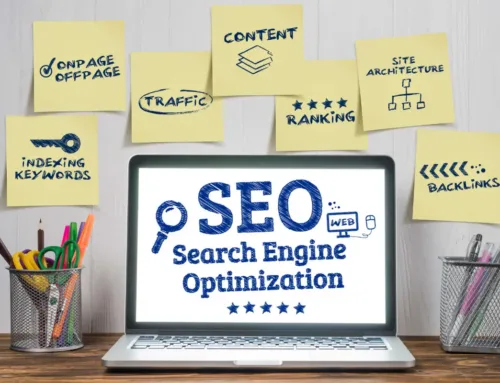Creating your website has become more straightforward than ever before. Accessible CMS platforms such as WordPress have become the industry standard in terms of user-friendly UIs and a plethora of customization and digital marketing options on offer. One such instance is the ability to translate your website into numerous languages and ensure that your content is visible, legible and engaging across the globe.
According to Tech Jury, 50,000+ new websites are created through WordPress every day, and while English-based sites are predominant, those that rely on languages such as Spanish, Indonesian, Portuguese and French continue to make their mark on the global market. With that in mind, let’s dive into the “why” and “how” to create a multilingual WordPress website using translation plugins to make sure that your market penetration and user engagement are high across the board.
Benefits of Relying on WordPress Translation Plugins
Content translation and localization aren’t groundbreaking topics in the WordPress community. This is especially true since professional plugins allow for a wide range of content production possibilities for both localization experts and original creators.
According to Shutterstock, however, 80% of users are more likely to engage with a website that offers a personalized experience, with 71% of marketers who claim that only less than half of their content is being consumed due to a lack of localization and translation.
There is a clear-cut need for websites to offer higher levels of UX in today’s global market, which is what makes WordPress translation plugins such a win-win for creators and users alike. With that said, the advantages translation plugins can bring to your content production include but are not limited to:
- Non-English market penetration and brand reputation growth
- Increase of engagement, conversion and subsequent revenue
- SEO benefits for your website as a whole
- Cost-effective in terms of global audience engagement
Types of Translation Plugins
It’s worth pointing out that WordPress translation plugins come in two distinct types. You can settle for one of the two variants or create a combination of both for your website depending on your business’ scale, complexity and number of languages you wish to feature.
In addition, platforms such as Pick Writers and Evernote can be used as third-party writing services for your WordPress content management to make the process more straightforward. With that out of the way, let’s take a look at the translation plugin types available on the global WordPress market:
- Auto-Translation
As the name might suggest, these plugins rely on automated translation algorithms. These plugins are a good choice for large eCommerce websites run by a small team without the capacity for hands-on translation or localization. However, it should be pointed out that their algorithms are not completely reliable in terms of modern lingo, slang, puns, and other idiosyncrasies. Make sure to always look over your translated content before publishing if you choose to rely on auto-translation plugins for your WordPress website.
- Self-Translation
In contrast to auto-translation plugins, these tools offer user-friendly UIs which can serve as a way for you to translate content on your own. Self-translation plugins rely on a more engaged approach in terms of your involvement with the content’s localization. These plugins are very flexible and feature-rich; however, they do require some familiarity with whichever languages you aim to localize into. In that sense, you should look for native speakers, translation experts or in-house coworkers with some insight into the languages you wish to translate to.

Creating a Multilingual WordPress Website Using Translation Plugins
1. Build Your Website
The first order of business in terms of creating a multilingual website is to head over to WordPress and create a basic site for further development. WordPress features numerous free and paid options in terms of server capacity, domain name authority, site security and other features that are completely subjective and up to you.
However, it should be noted that you should have a good sense of branding as to where your website will head once it’s created. Do you want to attract online customers and sell products for international shipping? Do you want to become a blogger or host and manage your own forum based on a popular industry or niche? Decide early on what type of website you are interested in developing, and the translation integration will be that much easier.
2. Choose Your Website’s Theme
WordPress is one of the most versatile and user-friendly platforms when it comes to customization – which is where their theme selection shines. WordPress themes are dime a dozen, offering a plethora of free and premium choices for all calibers of users.
You can run a WordPress blog with a premium theme which will complement your content or an online sales website with a rudimentary, free WordPress theme. It’s good practice to choose your theme early on and focus on content production, translation plugins and community management rather than an exuberant theme selection process.
3. Produce Original Content
No matter what industry or content types you decide to publish, you should focus on their production as soon as your site is up and running. Original content is highly important for fresh WordPress websites and their visibility on global search engines such as Google, Yahoo, and Bing.
Don’t rely on republishing, plagiarism and copyright infringing materials in general for your newly-created WordPress website. Create your own style of content delivery through an original tone of voice and you will undoubtedly start building a community.
4. Assemble Your Translation Plugins
Once you have a sufficient amount of original content available in your native language, you can think about adding translation plugins to your WordPress website. Adding these plugins to your tools lineup early on is not a good idea for several reasons.
It will split your attention between content production and localization, which is not a recommended turn of events since your website is still in its infancy. However, once you are confident that you have enough content available for translation, these plugins will be highly efficient at lending you a hand:
- Polylang
One of the most feature-complete and easy-to-use translation plugins comes in the form of Polylang. It is a very popular plugin compatible with a plethora of SEO tools such as Yoast SEO, which offers an added level of optimization.
- Google Language Translator
If you want to use a lightweight translation plugin that won’t affect your SEO or load times, this is the choice for you. Google’s native translation algorithms are perfectly suited for both casual and professional users in dozens of world languages.
- WPML
WPML is a widely-popular premium WordPress translation plugin. It offers quality-of-life features such as multilingual SEO, drag-and-drop translation and hands-on assistance with more complex localization tasks. It’s one of the oldest and most reliable translation plugins, making it a safe choice for users of all calibers.
- Lingotek
Lingotek is a translation plugin with a cloud-based repository of translations and localizations. It fully automates the process of translation and transfer of localized files from its UI to your WordPress dashboard, making sure that content writers and site managers alike can fully utilize it.
5. Multichannel Marketing & SEO
Lastly, you should ensure that your content is seen by as many potential readers and customers as possible. Multichannel marketing through social media, email, affiliate marketing and paid ads can ensure that your brand grows in popularity and industry authority.
In terms of organic reach, search engine optimization (SEO) should be a priority as it can bring a sizable audience to your doorstep through search ranking. Platforms such as Google AdWords and SEM Rush can be utilized to find language-specific keywords, phrases and formatting trends to follow in terms of translation content optimization. Do your best to publicize your WordPress website and the right audience will always follow up on your ads with traffic, engagement, and conversion down the line.
Translation Mistakes to Avoid
Now that we have a clearer idea of how you can start up your WordPress website with translation plugins in tow, let’s take a look at some noteworthy pitfalls to avoid. Your translation game will only be as effective as your consistency and dedication to the process, which makes these mistakes highly damaging for your overall brand.
- Reliance on Automation
We’ve talked about auto-translation plugins previously, so it shouldn’t come as a surprise that automatic localization isn’t foolproof. You should never completely rely on automated translation, no matter how unfamiliar you might be with a language personally. Ask for a second opinion, use more than one plugin and refer to spelling platforms such as Grammarly and Hemingway before you publish any piece of content on your WordPress website.
- Lack of Multimedia Translation
Multimedia content in the form of videos, images and visualized data should be translated just like written materials. You can add captions, alt-text and other forms of DIY translation to multimedia if you don’t have a designer or an editor close by. However, it’s important to add at least some form of translation to these items since they are pivotal to the overall enjoyment and engagement of your content for the global audience.
- Partial Website Translation
Lastly, partial website translation is as good as no website translation. If you choose to localize your website into Greek, Russian, Chinese or any other popular global language, make sure that you are committed to it. Translate every new piece of content into all of the languages featured on your website to stay consistent and professional. This will not only help your brand reputation but also search ranking and SEO due to your content’s accessibility.
In Conclusion
Creating a multilingual WordPress site with translation plugins may seem overwhelming at first. However, WordPress is well-developed as a CMS and allows for a wide range of customization options to boot.
Don’t be afraid to translate your content into languages such as German, French, Italian or Spanish to test the waters in terms of audience interest. Before you know it, you will have carved out your international niche and the audience will return to your WordPress website time and time again in greater numbers.




